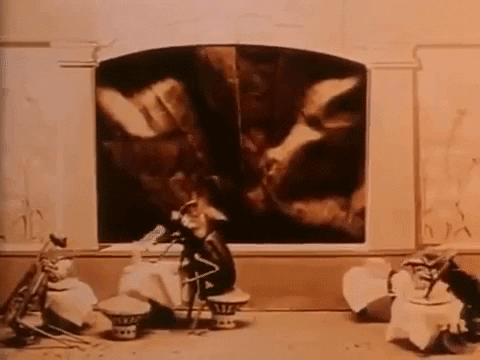
Week 1 Summary
1. Chapter 1: Underpinnings: The Principles of Animation Reading Synopsis:
The first chapter of the textbook began by giving definitions of the twelve fundamental principles of animation. As the chapter continued on, it talked about the history of animation starting with The Chauvet Cave. As the chapter continued with the history of animation, it uses pivotal moments in animation history as examples for the 12 fundamental principles of animation.
2. Animation Samples Synopsis: 1899-1930 (Pick one and write a brief summary of what you found interesting and how it relates to your aesthetic)
I found the Cameraman’s revenge animation interesting because of the stiffness of the characters. Although the stiffness of the characters is due to the limitations of animation at the time, I believe that this is embraced and in turn, it creates an aesthetic that reminds of The Nightmare Before Christmas. I relate to this aesthetic because I am not interested in making things that are hyper-realistic. I am interested in creating new worlds within my animation.
3. Interview Reading Synopsis: Rose Bond
The interview begins with Rose Bond talking about her creative process and some of the artworks she has created. Rose Bond’s current work focuses on large scale, site-based animation installations. These installations are usually focused on telling the story of the “unremembered.” Rose Bond goes on to talk about her installations' relation to fine art. Many of Ms. Bond’s projects are funded by grants and require a lot of research to create. Rose Bond goes on to talk about how her love for animation came from her drawing background. She became interested in animation after she realized that her drawings were snapshots in a sequence. Ms. Bond then began using animation to add more “layers of meaning” to her work. The interview finishes with Rose Bond talking about her work operates culturally and politically.

Pictured above: Rose Bond